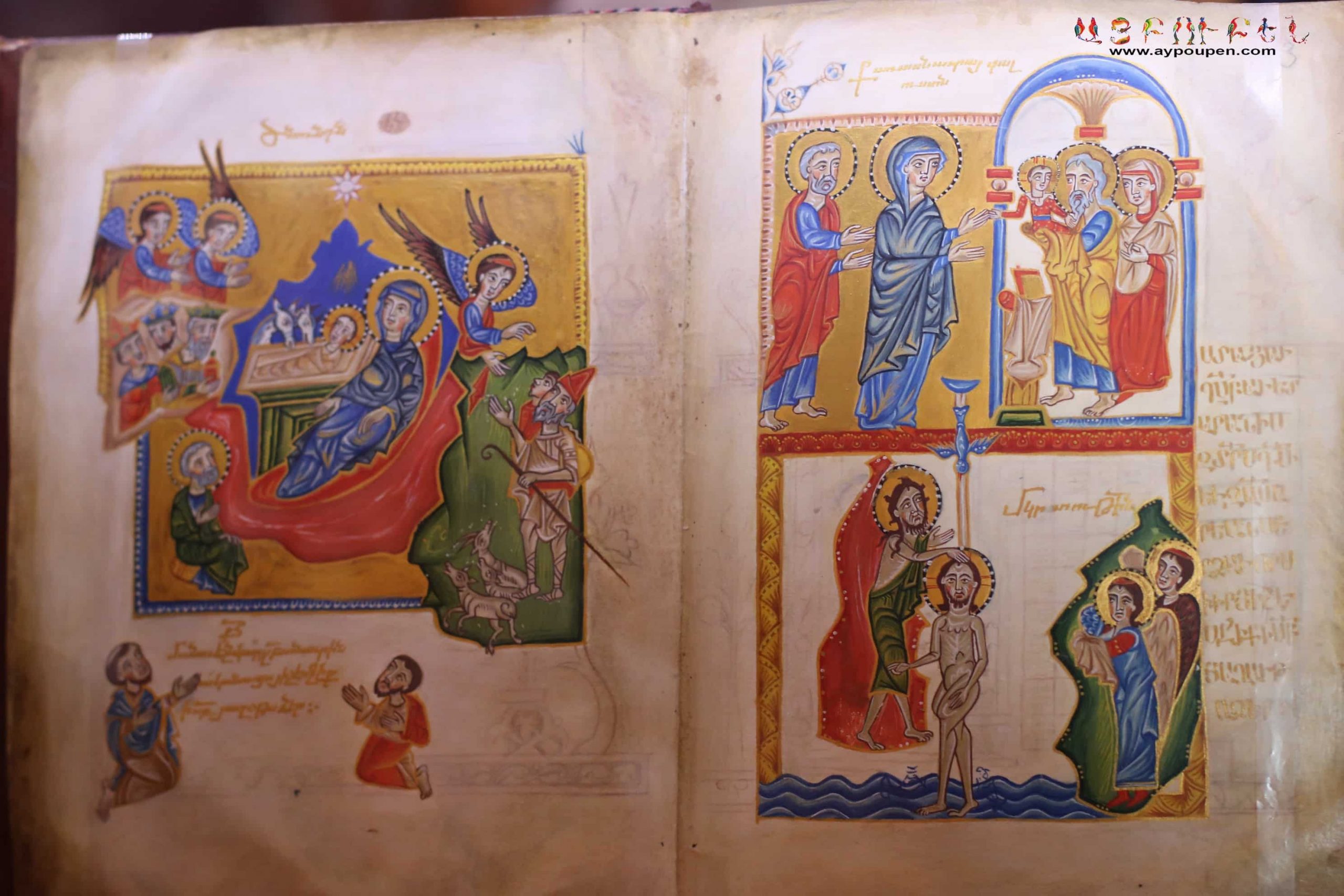In Old Liturgical Armenian, Diaruntarach is derived from the words Diarn and Entarach: Presenting in front of the Lord. Diarnuntarach is one of the most important feasts celebrated by the Armenian Church.
It commemorates the event of 40 days old Jesus when he was taken to the Temple to be presented to the Lord. On this day new parents take their children to church for a blessing and newlyweds go to church in the hope of a blessing to have children
The Event in Jesus’ life has its origin in Jewish law according to some sources. Forty days after his birth, Mary and Joseph took Jesus to the temple. There an old man named Simon waited in expectation of the arrival of the Lord.
Feast of Diarnuntarach and Terentez
- In old Armenian Kreapar Diarnuntarach means Presenting Jesus before the Lord.
- The Armenian Church Celebrates Diarnuntarach on the ever of 13th and the morning of the 14th of February
- The 13th of February is a Nakhadonag- Eve of the feast, and a bonfire is lit representing the light of Jesus Entering the Temple.
- The14th of February a Holy mass is celebrated in memory of the event
- If the 14th is a Sunday, then traditionally there will be no mass in the morning but in the afternoon
- In Old times, they kept the Christmas tree for 40 days, so they burned it on a bonfire.
- People turn around the fire and sing songs about Vartanants’ battle because it is also in February
- Teenagers jump above the fire to show off their strength.

40 Days Presentation to the Temple
In some religious traditions, it is customary to present a child at the temple or church 40 days after they are born. This act is seen as a way of consecrating the child to God and giving thanks for their safe delivery.
For many parents, it is an opportunity to reflect on their own faith journey and commit to raising their child in a religious community. In some cases, the 40-day presentation may also involve a special ceremony or ritual, such as baptism.
Whether you are welcoming a new baby into your faith tradition or simply giving thanks for their safe arrival, presenting a child at the temple or church can be a meaningful and memorable experience.
Armenians bring their children to church when they are 40 days old, the Priest will pray on them and take the child to bless on the Altar. The same is done in Diarnuntarach where parents are encouraged to take their children for prayer and present to the Lord.
How Armenian Americans celebrate Terendez
Is Diyarentarach a Pagan feast or a Christian feast?
However, the celebration also dates back to pagan times in Armenia, when the belief that fire had cleansing and purifying powers was widely held. Although celebrated on the 14th of February outside of the republic, Diaruntarach or Terendez is observed on the 13th in Armenia.
During the celebration, the fire of Terndez symbolizes the coming of spring, bringing with it a mild climate, a rich harvest, and the blessing of newly married couples.
The church has replaced the old celebration with the new event. Nowadays some people especially fundamental Christians express their unease with fire and regard it as disrespectful to the Christian Faith because people rather turn around the fire and jump above it than enter the church during the ceremony.
What does the fire of Diarnuntarach symbolize?
In some celebrations, Terendez is permitted only on holy ground in the churches, but elsewhere families would light fires in their own yards. These families are generally those with a recently engaged daughter or whose children had recently married.
In such cases, the couples themselves would collect the firewood, while in the churches; Terendez followed a ceremony in which priests would bless the firewood.
People then gather around the fire, believing that the direction in which the smoke blows indicates the location of the most fertile land available for the planting of crops.
What to expect from Diaruntarach?
Couples then jump through the fire, followed by any children in attendance. Those suffering from illnesses or infertility would then join pregnant mothers and women who had just given birth and jump through the flames. Those considered “unclean” in the symbolic forty days are protected from evil, with some burning parts of their clothing to protect themselves from the bites of scorpions and snakes.
After the fire is extinguished, dancing begins, and candles or lanterns are lit from the fire and taken by people to burn in their own homes. The ash of the fire is also considered of great importance and prepared as a drink for pregnant women or those suffering from illness.
Some also spread the remains of the fire across fields and cattle sheds, or place it in tonirs used for making lavash (thin bread).
If you like this article and would like to read about the Armenian church in Kolkata, click here.
